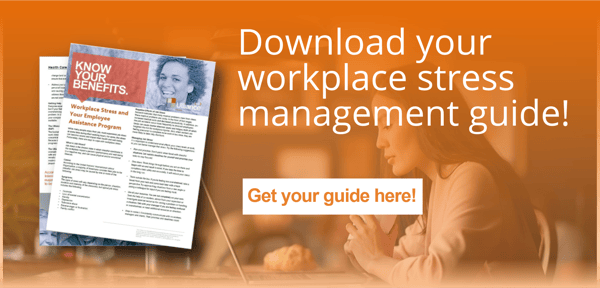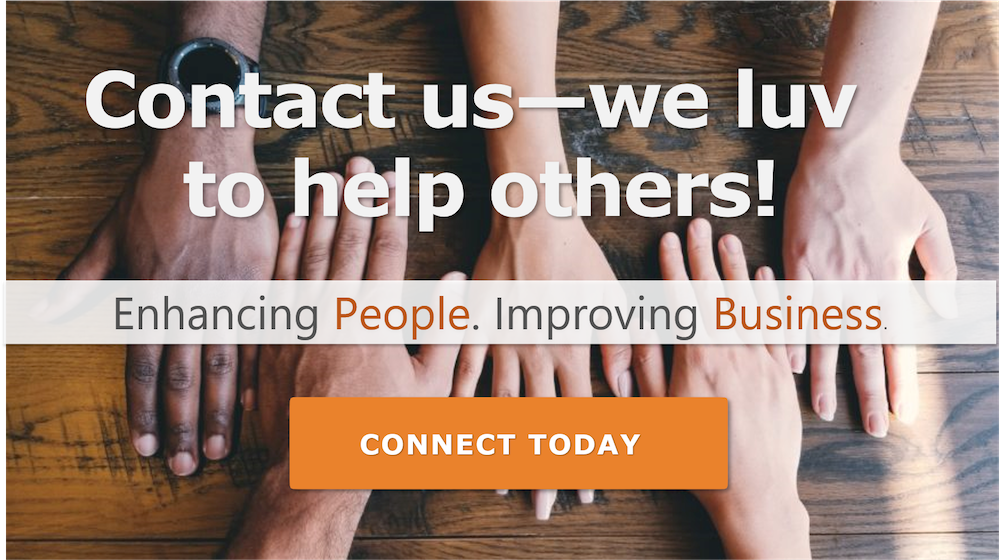April is Dedicated to Stress Awareness
This month, a full year into the pandemic, stress is a feeling we are all very well aware of.
This month is dedicated to stress awareness and has been since 1992. The 90’s. Remember those days? We thought we were stressed then. If we knew what we were in for in 2021, we might not have taken things quite so seriously.
But, since none of us own time machines, we trudge forward dealing with the stresses of 2021.
What is Stress?
You all know about stress, how it feels and how harmful it is to your health. But, can you define it? That seems like an easy question to answer. Try it. Stress is _________.
It is the body’s natural response to a perceived challenge or threat. If you find yourself in a situation that is challenging emotionally or physically, you will experience stress.
Hormones will begin to build in your body that creates tension, strain or pressure. This response is readying you to freeze, flee or fight. Often this situation acts as a motivational force that provides you physical strength and mental clarity.
Common reactions to a stressful event can include:
• Disbelief, shock, numbness
• Feeling sad, frustrated and helpless
• Difficulty concentrating and making decisions.
• Headaches, back pain, stomach problems
• Smoking or drug use
• Depression
When you perceive you are out of danger, the hormones coursing through your veins and your increased heart rate return to normal. If you are in an ongoing stressful situation, this constant rush of hormones can be dangerous and make you susceptible to stroke, heart disease, depression and other illnesses.
Many times we don’t have the power to change what is causing the stress in our lives. This is especially true in the workplace.
According to a National Institute of Occupational Safety and Health (NIOSH) report, job stress is more strongly associated with health complaints than financial or family problems.
Workplace Stress Prevention and Reduction
The NIOSH report also states that 75% of employees believe that there is more on-the-job stress than a generation ago.
Stress, mental health and wellness options were mainly non-existent until recently.
Tools and methods for preventing job stress are much more relevant than they were a decade ago. Awareness of the dangerous effects of stress and recognition that most stress occurs in the workplace has led companies to be proactive in helping their employees work in a less stressful environment.
Many actions can help reduce job stress. Organizational change reduces employee’s stress levels while increasing productivity. Changes employees make on a personal level can also reduce personal stress.
3 Proven Workplace Stress Management Strategies
The combination of organizational change and individual stress management has been found to be the most helpful approach for preventing and addressing stress at work.
1.) Primary prevention methods are actions taken by an organization that focuses on preventing individual illness and reducing stress exposure.
Primary prevention strategies can be employed on several levels. For changing policies that affect whole populations, legislation is often effective.
Some examples of legislative regulation include:
• Workplace ergonomic policies
• Minimum staffing levels for nurses
• Bans on mandatory overtime
• Paid family leave laws
Unionized workplaces can use collective bargaining for implementing stress reduction programs, while non-unionized workers can utilize employee groups working with management to improve the quality of the workplace environment.
Examples of Primary Prevention methods include organizational strategies such as:
• Clearly defining workers roles and responsibilities
• Matching workload to workers' capabilities
• Job redesign
• Worker participation in decisions that affect their jobs
• Work schedules that are compatible with demands outside the job
• Improving communications between workers and managers
• Equitable pay structures and compensation
Individual prevention strategies include:
• Lifestyle management
• Participation in workplace quality improvement
2.) Secondary Prevention interventions are aimed at modifying an individual’s response to stressors. Strategies often include providing education and training to employees around stress management. The goal is to assist employees in coping with stress in the environment and reducing its effects.
Some organizational examples include:
• Team building
• Diversity programs
• Worker education and training
• Access to fitness facilities
Individual prevention strategies include:
• Good nutrition
• Meditation
• Physical activity
• Social/emotional outlets
• Assertiveness training
Even the best methods and strategies cannot prevent all stress from occurring in employees' lives. What do you do when stress prevention was not successful, and individuals find themselves seriously impacted by a stressful event? You employ tertiary prevention methods.
3.) Tertiary prevention is designed to minimize the effects of stress-related problems once they have already occurred. They do not prevent job stress problems from occurring. The strategies here help employees recover from serious health problems resulting from stress.
Some examples of tertiary prevention include:
- Employee Assistance Programs
- Psychological counseling/therapy
- Traumatic event debriefing
- Medical care and treatment
Stress and Life
Stress in life is unavoidable. Taking care of yourself and managing your stress is a valuable skill that could add years to your life. There will be situations you cannot change. Recognize them and learn to let them go.
If all else fails, organize. Research suggests that decluttering and organizing can have a considerable impact on your well-being. Unorganized individuals tend to have higher cortisol levels indicating chronic stress, while people who felt their environment was organized and restful showed less cortisol. Check out an earlier blog ► "Kondo your Workspace, It's Good for your Headspace".
Is your workspace cluttered? How about your kitchen or bedroom? A cluttered environment makes it more challenging to focus and causes irritability. It decreases your efficiency, making everything you do take longer than it should.
To help ease stress levels, take 15 minutes to clean and organize your desk preparing you for the next workday at the end of each day. Take another 15 minutes at the end of the day to pick up stray items you have left lying about, and put them away. Pick one room in your home to organize and declutter each week, and watch as you sleep better and decrease the amount of stress hormones pumping through your body.
Finding a way to manage stress that works for you is the key to living a healthy and happy life. If you need help, reach out. These strategies exist because they have been proven to reduce stress. You can break the stress cycle.
Now more than ever, your employees need emotional support and resources. The pandemic has created a whole new set of physical, financial and emotional stressors that have woven their way into the home and workplace.
Hundreds of organizations support their employees through The Ulliance Life Advisor Employee Assistance Program (EAP). Investing in the right EAP to support your employees before, during and after they face adverse events will help them and help you. Visit www.ulliance.com, or call 866-648-8326.
When you partner with Ulliance, our Life Advisor Consultants are always just a phone call away to teach ways to enhance your work/life balance and increase your happiness. The Ulliance Life Advisor Employee Assistance Program can help employees and employers come closer to a state of total well-being.
References
Clark, M. (2018, 4 05). Stress Management. Retrieved from Mayo Clinic: https://www.mayoclinic.org/healthy-lifestyle/stress-management/in-depth/how-decluttering-your-space-could-make-you-healthier-and-happier/art-20390064
Lowell, U. (n.d.). Job Stress - Employees. Retrieved from Umass Lowell: https://www.uml.edu/Research/CPH-NEW/Worker/stress-at-work/employees.aspx
Meyer, P. (2021, 04 07). Retrieved from The American Institute of Stress: https://www.stress.org/april-is-stress-awareness-month
SAMHSA. (2020, 04 17). Organizational and Individual Stress Management. Retrieved from SAMHSA: https://www.samhsa.gov/dtac/dbhis-collections/disaster-response-template-toolkit/organizational-individual-stress-management



